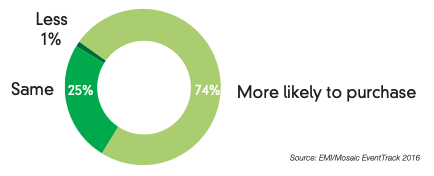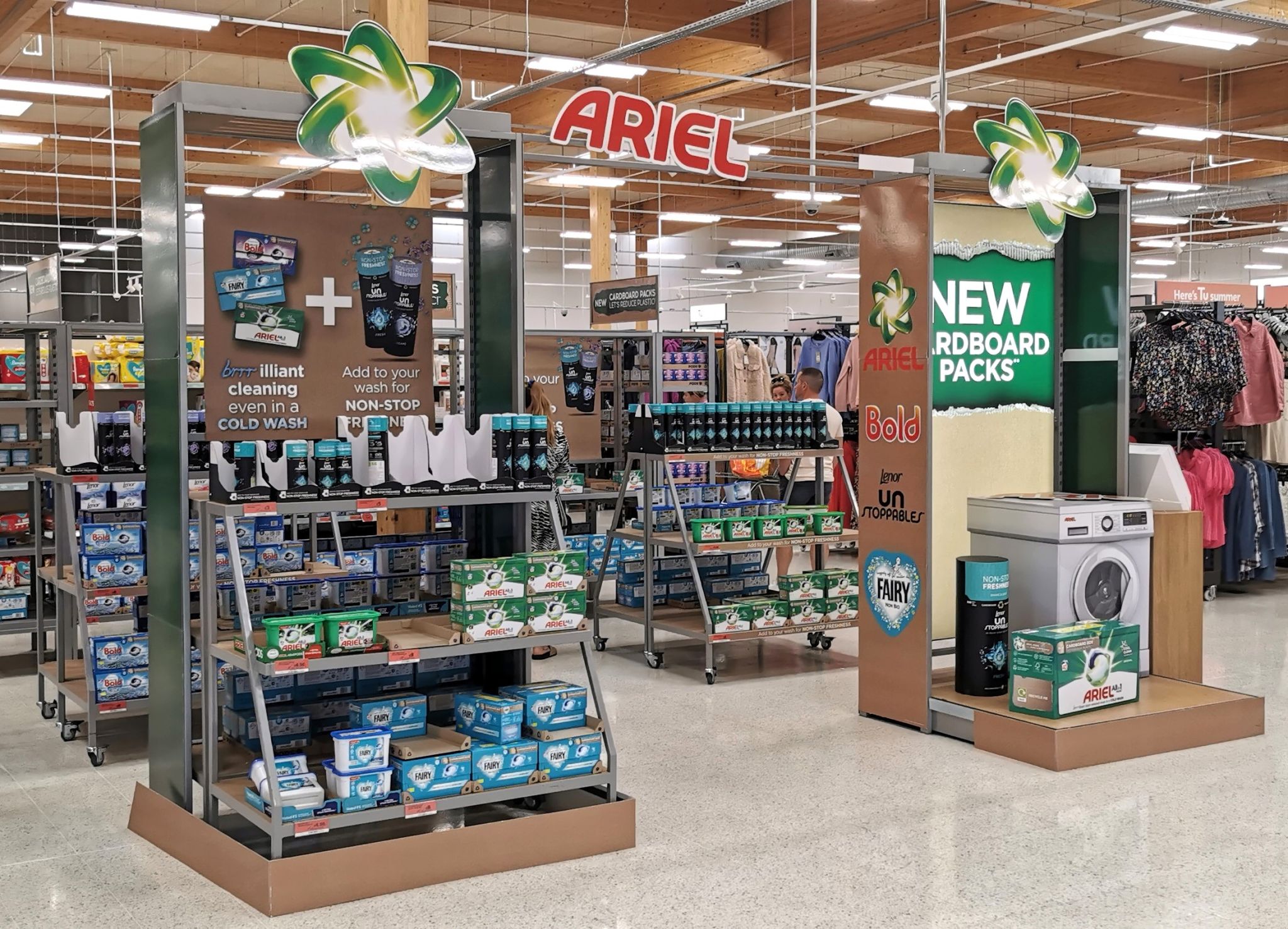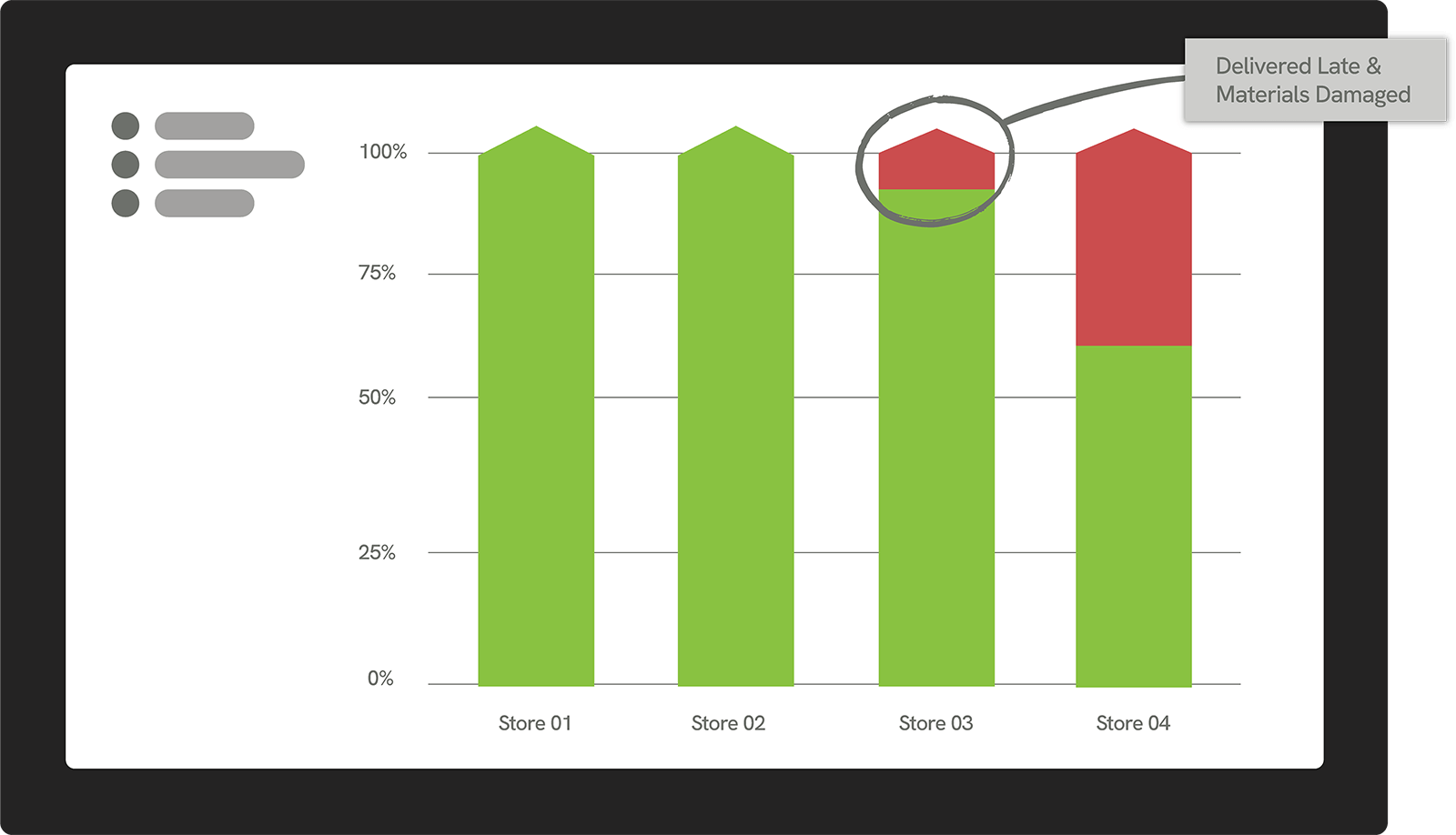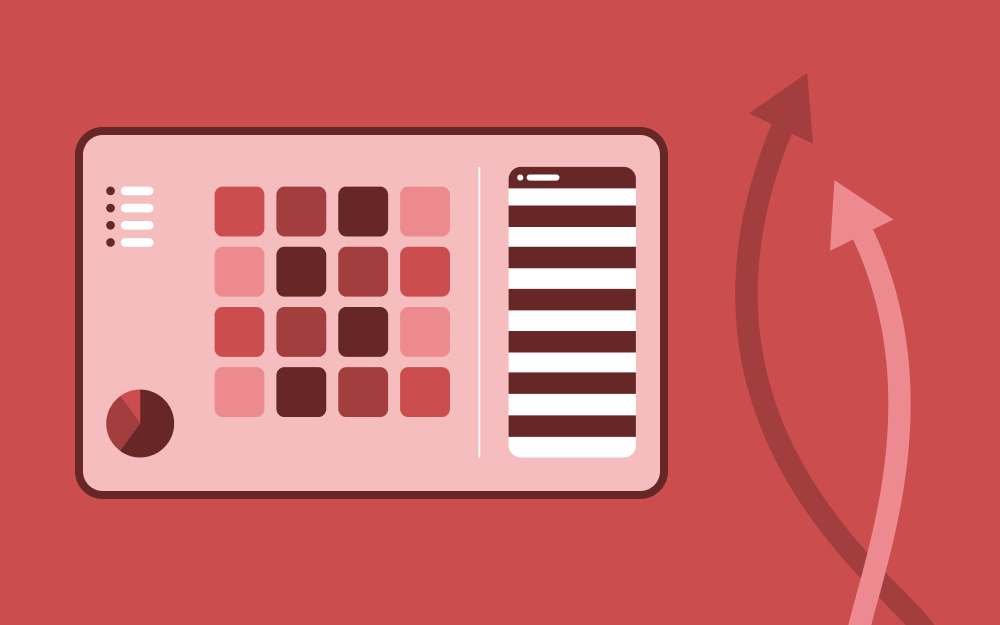The Ultimate Guide to Brand Activations


So you’re looking to get your products maximum exposure and drive sales. Well, in-store Brand activations are the way to go, and in this article, we’ll go through why they’re important, how to maximise their potential and how to analyse performance.
Whether you are launching a new product or running a promotion, you need to get in front of potential customers.
An in-store brand activation is a campaign or event that drives action from your target audience. The aim of these campaigns is generally to generate brand awareness, increase brand salience and drive customer loyalty. They are occasionally used to promote specific products. While there are different types of brand activations, in-store brand activations are the most common.
As many brands already buy shelf space from retailers, in-store brand activations can be some of the most effective tactics. However, there is even more reason brand managers can get excited about activations.
While it’s easy to favour glamorous TV ads, Sponsorships or even Social Media advertising, brand activations are a critical part of the marketing mix.
In fact, 74% of people said they are more likely to make a purchase after attending an activation. You don’t get stats like that from a focus group that just saw your TV ad.

Source: EMI/Mosiac Event Track 2016
Activations put you directly in front of customers and build brand salience and affinity with your brand. In terms of converting non-believers to advocates, it’s one of the best methods available.
Some may argue that brand activations simply put you in front of people that would buy from you anyway. Well, an NRF report found that, on average, 80% of retail purchases happen in-store. Furthermore, a shopper engagement study found that 82% of people don’t make purchase decisions until they enter the store.
This creates a significant opportunity for brands to get their products in front of shoppers and influencer purchase intent.
Of course, brand activations cannot support your whole marketing strategy. While research does demonstrate that in-store advertising is a significant source of brand awareness, running activations can be expensive to attain a wide reach.
While e-commerce brands have claimed the Direct to Consumer label, physical retail stores are the original platform for directly reaching customers. They offer unrivalled access to promote your product precisely where shoppers want it.
And it should be treated as such. While activations can create mental availability in your customer’s mind, the primary role of your store presence is to promote physical availability (i.e. having it on the shelves).
Therefore, you cannot rely solely on in-store activations to drive revenues. The best in-store activations work in tandem with Social media, TV and email campaigns that drive people to your store on the day of the event.
While you may host your activation on a busy day for the store, you cannot solely rely on encountering sufficient foot traffic for your activation to be successful.
Instead, the best campaigns may take place over 3-12 months, building mental availability with your customer via TV advertising and working with social media influencers. Then, 2-4 weeks of in-store activations can convert that demand at an increased rate into revenues.

While you may wish to run off and launch your activation right away, it’s important to consider all of the options.
Below, we have explored the key considerations that affect your in-store brand activation.
Firstly, you must consider the overall strategy for your marketing. Does an in-store brand activation make sense within your marketing objectives for the year?
If you want to celebrate the launch of a new product, flavour or brand in a crowded market, it can be incredibly effective in getting new customers to be aware of and try your product.
However, if there is limited competition or if your product is in a completely new category, then you may want to focus on influencer or TV advertising. Brand activation could be a component of your campaign, but it’s maybe not as necessary as when you’re launching a new Cola drink, for example.
One of the biggest challenges with in-store activations is measuring their performance. Because of this, we often assign quite flimsy objectives like “raising awareness”.
Instead, focus on the role it plays within your campaign, and create SMART objectives. Maybe you are looking to raise awareness but define how much awareness you intend to raise. Work with retailers to understand the foot traffic in certain aisles and your typical product sales numbers over a similar period. Consider the performance of previous campaigns; what difference did they have on revenues compared to during non-campaign periods? You should expect similar performance (if not better) in future campaigns.
We’ll go into more detail about how to measure brand activation performance later on, but to be able to measure performance at the end, you need to have the systems in place to measure it from the start. So you’ll need to define that upfront.
For example, if you’re running a taster for a new type of cheese, you’re promoting it. You will give out free samples at a booth. Maybe get your team manning the booth to capture how many people came to the booth, what were the most popular questions, and how many tried the cheese. By capturing this data as it happens, it will be much easier to measure performance later and demonstrate the impact of your activation beyond pure sales figures.
In-store activations resonate more with some buyers than others, so it’s important to consider how your target customers typically shop.
For example, technology can be a great way to bring a product experience to life. However, an event utilising Virtual Reality technology may prove more effective for a younger audience.
Additionally, perhaps your social media or digital campaigns are doing an excellent job of generating revenues from younger audiences already. In this case, your activation may target a different audience.
Deciding who to target with your campaign will inform your other decisions moving forwards, including which locations to run it in, which retailers to work with, and even what dates and times to launch it.
For more information about buyer habits, read our complete guide to audience targeting for shopper marketing campaigns.
You will undoubtedly have your overarching communications strategy. You then need to decide what will translate into your in-store activations.
If you’re only using signage, it could be as simple as re-purposing your messaging and images from other channels. However, the most impactful campaigns make a splash by using 3D structures to drive engagement.
It’s here that creativity can significantly elevate campaign performance. In a study of marketing campaigns, Nielsen Research found that creativity had the biggest impact on brand recall and purchase intent.
In other words, if you’re promoting a new type of toothpaste, consider getting an 8-foot plastic tooth and getting passers-by to clean bits of it in the hope of winning a prize.
Therefore, it’s critical to get your creative work right. Ensure you can monitor and provide feedback on design work – justify your decisions and move forwards. Using a tool for artwork approval can streamline this process tremendously.

Undoubtedly, choosing which retailers to run your activation with will have a significant impact on the effectiveness of your campaign.
While you may display products in multiple retailers, you might only want to run activations in one or two. Exclusivity may yield better rates. However, you must also consider if the retailer’s buyers match your target audience.
Additionally, some brand activations can be quite big, and you will need to consider the size of the stores. If the only place your activation can fit is in the back near unassociated items, it may not be worth it.
We explored more about different places for promotions in this article.
It’s not only the retailer and placement within the retail store to consider. You must also consider which locations across the country to run your activations.
Will you target city centres or sub-urban outlets? Are you just targeting certain states or regions? These options should be decided by your profile targeting. When you know who you’re targeting, you can identify the locations they tend to shop in and ensure you reach them in the right places.
Work with your retail partners and utilise their data from loyalty cards and POS data in their store profile management system to identify where shoppers are and which stores to deploy your advertising in.
Your in-store activation may be part of a larger campaign. You may promote a new product throughout the year, but your in-store activation may only be for 1 month.
In this situation, it’s critical that you plan in-store campaigns to deploy on dates that will maximise revenues.
If you can, work with your chosen retailers and tap into shopper behaviour.
Let’s say you’re promoting a new flavour of ice cream. You may want to promote it during the winter to minimise the expected dip in revenues. Additionally, you may not want to discount your product or give away free samples during summer when you expect it to fly off the shelves regardless.
However, consider that you could promote in the summer so that customers choose your brand over competitors. Additionally, sometimes it doesn’t matter how much you promote a product; buyers simply don’t want ice cream in the winter!
By working with retailers and considering your own customer buying behaviours, you should determine the optimal date to activate in-store.
It’s happened to all of us. You’ve spent months planning your flawless in-store activations. You distribute them to stores and hear no complaints.
“This is great. It’s all gone smoothly.” you think. Then, the next day, your boss is at a local store in Scunthorpe and finds that some of the items hadn’t been delivered, so the store only put up half the display.

Needless to say, with the best plan in the world, your campaign can all go wrong at the implementation stage. Here are a few ways to make sure you get it right:
When creating your campaign plan, ensure you assign owners responsible for implementation. If you outsource it to a specialist, then be clear that their responsibility is to get it right. Ensure they have the instructions and an escalation plan for when things go wrong.
Additionally, don’t leave everything up to them. If you have people manning your activations, make sure they know it’s their responsibility to make it looks right. Ensure they are aware of their duty to raise any issues with the implementers and escalate it to you if they leave without getting it right.
If you don’t have people manning it, consider ways to hold your installers more accountable. Work with retailers to provide checks, or consider how you will audit the activations with regional managers.
Whichever option you choose, ensuring you have designated clear accountability and responsibilities will reduce the chance that issues go unnoticed.
Alongside assigning clear roles and responsibilities for those involved in implementing the campaign, it’s critical to provide visibility of upcoming campaigns. Especially if you are relying on the retailer to implement them, giving them visibility of when items will land with them and when to install them is crucial. Making each store aware of why it’s there and the objectives you want to achieve with it will help people get it right.
Simon Sinek’s “Start with Why” book applies to more than just advertising and company culture. It allows people to use initiative in times of uncertainty to make decisions.
Let’s suppose I asked someone to buy me an orange from the supermarket. Then they go to the supermarket, and there are no oranges there – he can’t call me to ask what to do, so he returns without anything. Now, let’s say I tell someone, “I’m low on Vitamin C and need more; could you buy me an orange?”. Then, when this person reaches the empty shelf of oranges at the store, they can use their initiative to buy alternative sources of vitamin C. Perhaps it’s a different fruit or even a supplement.
The same goes for your in-store implementations. You don’t particularly want to give them too much freedom, but in cases where they understand why you want to do something as well as what you want them to do, they can use their initiative to make it right if things aren’t perfect.
Some activations are more complicated than others. If store teams find it difficult at the time, this will likely lead to email questions on the day or worse; they just give up on it.
To avoid confusion, arrange training sessions with teams to do dry runs. This both gives staff a shared sense of ownership and reduces the chance of errors further down the line. They might even come up with suggestions to improve it that you hadn’t thought of!
It’s obvious to say that you need to issue instructions to reduce errors. However, as every store layout differs, you can end up with several permutations for each installation.
If you have 2 windows, implement it in configuration X. If you have 5 windows, use configuration Y. If you have landscape windows, use these other materials. All of this will cause confusion and lead to potential mistakes.
You should aim to personalise the instructions and the materials you issue to every store setup. This will reduce confusion by ensuring teams only have the materials and instructions they need. They can’t accidentally put up the wrong materials, and they can’t accidentally put them up in the wrong way.
Undoubtedly, the best way to reduce errors is to open 2-way communication between your implementation team and your head office.
Even with the best plans and following all of the other advice in this article, mistakes happen, and things go wrong.
In these situations, you need to make it easy for implementation teams to contact head office, inform you of the situation and ask for help. Ideally, you will issue a post-installation survey where teams can answer questions about the materials they received and attach pictures. Then, even if they think they’ve implemented it correctly, you can check for yourself too.
However, with your activation going into 100 stores, the last thing you need is 100 emails filling up your inbox. Instead, look for workforce management software that enables streamlined communication between head office and store teams.

So you have completed your brand activation campaign, and you need to measure the impact it has had.
Measuring the performance of physical marketing campaigns is notoriously difficult. However, there are several methods you can use. Firstly, measuring performance will depend on the objective of your campaign. Below are a few different options based on your objective.
If your goal is to generate brand awareness, you need to measure how many people stopped and noticed your activation.
If you have people manning your activation, this could be as simple as having them count the number of interactions and product giveaways. Alternatively, if your activation is shelf signage, you might use eye-tracking technology within your adverts to understand how much attention buyers give your activation.
However, brand salience is proven to be more useful than simply driving awareness, loyalty and advocacy. Brand salience measures the association between your brand and category. For example, Hoover has a significant brand salience within the vacuum cleaner category. We want our brands to be top of mind for shoppers considering buying a category.
You might conduct an exit survey as shoppers leave the retail space to ask if they noticed your pop-up and can recall the name. Additionally, you could conduct a post-purchase survey for anyone that stopped at your stand.
If your goal is customer loyalty, you might offer people to signup for your newsletter or a subscription-based service you offer.
Customer loyalty would be better measured over a longer period. You can still conduct your exit survey. However, you will need to monitor brand salience and repeat purchase behaviour over a longer period of time. So you will need to run focus groups and additional surveys throughout the year. While it will be difficult to measure the precise impact of each activation, the cumulative effect of several over the longer term will be measurable.
In-store advertising has a significant impact on purchase behaviour, with 82% of shoppers making purchase decisions in-store. Therefore, your campaign might target a revenue uplift.
The main way to measure the success of your brand activation campaigns is to compare product sales during campaign periods against non-campaign periods. However, you must compare it to periods of equivalent sales in previous years. Returning to the ice cream example, if you run a promotion in November and compare sales to a non-campaign period in July, there are still likely to be more purchases in July. Instead, you must compare it to the previous year’s performance.
You should also monitor the number of purchases in the weeks following your promotion. If you have discounted on price, you may have just brought sales forward rather than increased them overall.

There is clearly a lot to consider for brands running activations, from audience research and campaign design to creative management and localised execution. And many marketers rely on complex spreadsheets to manage everything. This often leads to mistakes or issues in execution. Yes, your campaign does have an impact, but the impact could have been far greater if things had gone perfectly. And, with budgets tightening for marketers, we need to make every penny count.
At Colateral, we help you execute flawless activations in every store. Whether it’s a simple Black Friday discount on shelf trackers or complex takeovers and pop-up stores, you can manage campaigns at a glance within Colateral’s brand activation management software.
If you operate multiple brands or promote different products, you can track all of your live and upcoming campaigns. Everything you could wish to know about your campaigns is available at a glance, including which stores they will be in. When will they go live? Which teams are working on each campaign? How much does each campaign cost? And even how the activation will look in each store.
Additionally, you can localise your marketing campaigns. You will undoubtedly need a bigger presence in some stores than others, and Colateral lets you easily control which versions of your artwork are sent to each location. You might want to run slightly different promotions in different retailers, and you can track that easily from Colateral.
To learn more about how you could automate brand activation campaigns, reach out to a team member.
Additionally, to receive weekly in-store marketing insights like this direct to your inbox, subscribe to our mailing list.
 Retail Media, Thought Leadership
Retail Media, Thought Leadership
Whether you are enticing shoppers into your stores or promoting special offers, in-store retail advertising...
 Thought Leadership
Thought Leadership
With up to 90% of a retailer's revenues coming from spend in store why isn't more available to help drive innovation when consumers walk through the front door? Well, the good news is, it is.